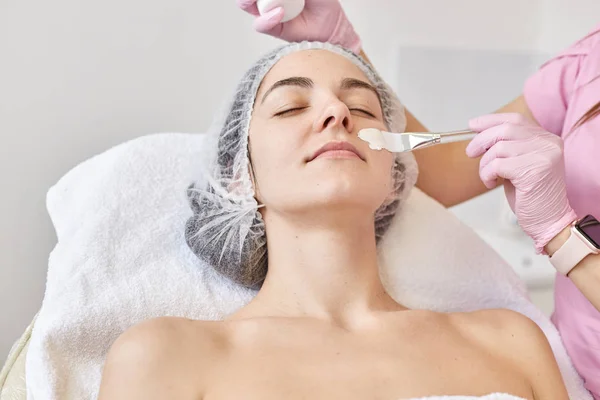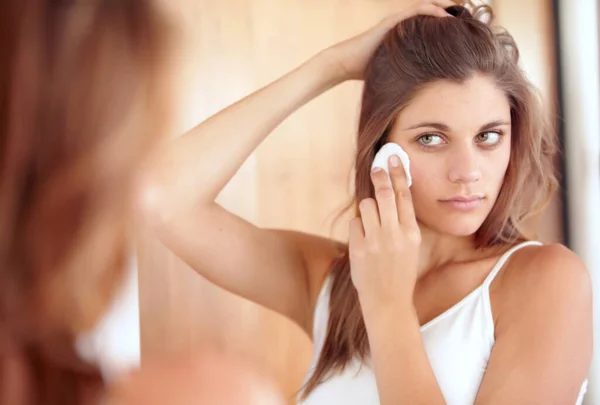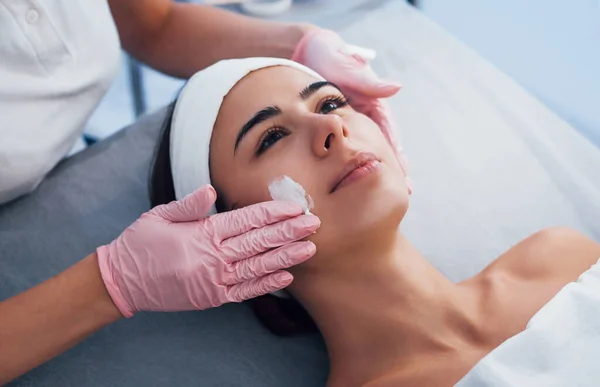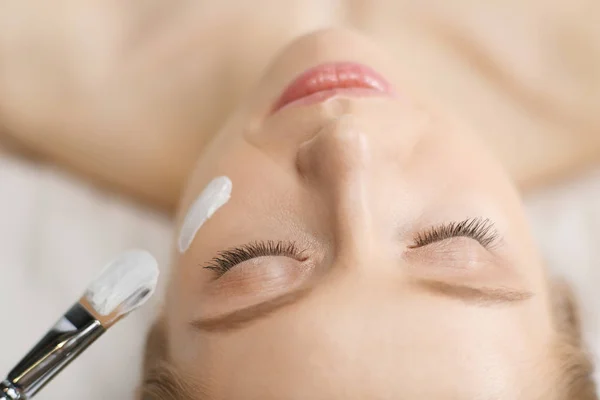How To Patch Test Skincare: A Step-by-Step Guide for Ensuring Product Safety and Efficacy
Imagine diving into a luxurious new skincare regimen, only to find your skin rebelling with unexpected irritation. Before you let your beauty routine become a battleground, there’s a simple yet often overlooked step that can save you from this cosmetic calamity: patch testing.
This essential, science-backed practice ensures your skin’s compatibility with new products, acting as a guardian against allergic reactions and sensitivities.
In this guide, we’ll unravel the art of patch testing, empowering you to confidently explore the world of skincare while keeping your complexion calm and collected.

How To Patch Test Skincare
Patch testing skincare involves applying a small amount of a new product to a discreet area of your skin to check for any adverse reactions before using it more widely.
It’s crucial to identify potential allergies or sensitivities. To patch test, choose an area like the inner forearm or behind the ear. Apply the product and wait 24 to 48 hours to observe any changes.
Why Patch Testing is Essential
Patch testing is essential to avoid allergic reactions and skin irritations. Many skincare products contain active ingredients like retinol, vitamin C, or alpha hydroxy acids that can cause adverse effects.
By performing a patch test, you can prevent full-face breakouts, redness, or even more severe reactions like swelling and itching. It’s a proactive measure to ensure the product suits your skin type and sensitivity levels.
How to Properly Patch Test
To properly patch test, start with clean, dry skin. Use a small amount of the product and apply it to a specific area such as the inner elbow or wrist. Cover the area with a bandage or leave it exposed, depending on the product’s instructions. Avoid washing the area for at least 24 hours.
Monitor the area for signs of redness, swelling, itching, or any unusual changes. If any adverse reaction occurs, discontinue use immediately.
Interpreting Patch Test Results
Interpreting patch test results is straightforward. If the test area remains unchanged, the product is likely safe for use on your face or body.
However, if you notice redness, itching, swelling, or any other irritation, it indicates that your skin may be sensitive to one or more ingredients. In such cases, it’s best to avoid the product and consult a dermatologist if the reaction is severe or persistent.
Frequency of Patch Testing
It’s a good practice to patch test each new skincare product, even if you’ve used similar ones before. This includes products like moisturizers, serums, and masks, as formulations can vary significantly between brands.
Additionally, re-test if you haven’t used a product in a while since skin sensitivity can change over time. Regular patch testing helps maintain healthy skin and prevents unexpected reactions.
Additional Tips for Effective Patch Testing
For effective patch testing, ensure you follow the product’s instructions carefully. If you’re testing multiple products, do so one at a time to clearly identify any specific reactions. Be patient and give each test enough time, typically 24-48 hours.
Always patch test products with potent active ingredients like acids or retinoids, as these are more likely to cause irritation. Keeping a skincare journal can also help track any reactions and understand how different products interact with your skin.
Understanding Patch Testing
What is Patch Testing?
Patch testing is a diagnostic tool used by dermatologists to identify substances that cause allergic contact dermatitis. This method involves applying small amounts of potential allergens to the skin, usually on the back, and observing any reactions over a period of 48 hours to a week.
Definition and Concept
Patch testing helps pinpoint specific allergens responsible for skin irritations. Small, hypoallergenic patches containing different substances are affixed to the skin. After a set time, the patches are removed, and any reactions are evaluated to determine if an allergy exists.
Difference Between Patch Testing and Allergy Testing
While patch testing specifically identifies allergens causing contact dermatitis, allergy testing generally refers to various methods, including skin prick tests and blood tests, to detect reactions to foods, pollens, and other airborne substances.
Why Patch Test?
Identifying potential allergens is crucial for individuals who experience unexplained skin reactions. Patch testing can prevent long-term skin damage by avoiding repeated exposure to irritants. This proactive approach ensures better skin health and helps tailor skincare routines to avoid harmful substances.
Who Should Patch Test?
Individuals with sensitive skin
People prone to reactions should undergo patch testing before using new products.
People trying new products or ingredients
Testing ensures that new cosmetics or skincare items do not cause adverse reactions.
Those with a history of allergies or skin conditions
Individuals with eczema, psoriasis, or a history of allergic reactions can benefit from patch testing to manage their conditions better.

Preparing for the Patch Test
When preparing for a patch test, gathering the necessary materials is crucial. Ensure you have the skincare product(s) to be tested, cotton swabs or pads, adhesive bandages, or medical tape. A clean, dry skin surface is essential to achieve accurate results. Choosing the right test area is equally important.
Common areas include the inner forearm, behind the ear, or the side of the neck. Avoid areas with existing irritation or damage to prevent inaccurate results. Conducting a patch test helps in identifying allergic reactions, ensuring your skincare routine is safe and effective.
Step-by-Step Patch Testing Process
Clean the Test Area
Start by cleaning the test area with mild soap and water. Make sure to dry the area completely to ensure accurate results.
Apply the Product
Use a small amount of the product, about the size of a pea. Apply it with a cotton swab or pad to prevent contamination.
Cover the Area
Secure the product with an adhesive bandage or medical tape. This helps keep the product in place and protects it from external factors.
Wait and Observe
Wait for 24-48 hours. During this period, monitor for immediate reactions such as redness, itching, or swelling.
Check for Reactions
After the waiting period, remove the bandage and inspect the area. Look for any delayed reactions like redness, bumps, or dryness, and document any changes.
Interpreting the Results
When interpreting skincare patch test results, it’s essential to know how to proceed based on the skin’s reaction. If there’s no reaction, it’s safe to integrate the product into your daily skincare routine. Start with a gradual introduction to ensure compatibility.
A mild reaction suggests the need to assess the product’s formulation and ingredients. Future patch testing with a diluted version might be necessary. Common signs include redness, itching, or slight swelling.
A severe reaction requires immediate discontinuation of the product. Symptoms like burning, severe redness, or blistering warrant consulting a dermatologist or healthcare professional. This step is crucial to avoid further skin damage. Always prioritize skin health and seek expert advice for any adverse reactions.

Additional Tips and Considerations
When testing multiple skincare products, it’s crucial to stagger tests to prevent confusion and accurately document results for each product. Re-testing ensures consistency in outcomes, especially considering changes in skin sensitivity over time.
Periodic patch tests are essential with prolonged use to monitor reactions and understand ingredient labels, identifying common allergens and irritants. Opting for hypoallergenic and fragrance-free products can offer significant benefits, promoting skin health and minimizing potential reactions.


